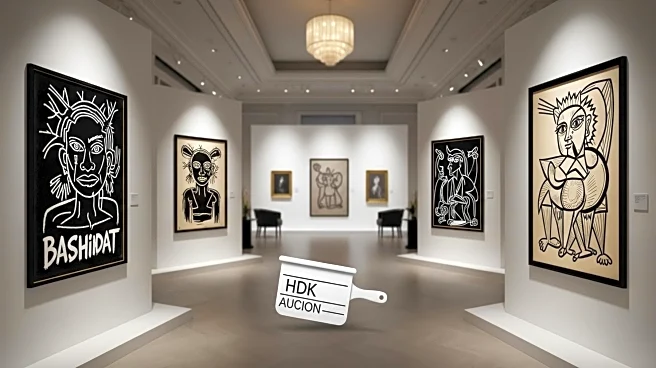What's Happening?
The US Marshals Service conducted an online auction of artworks linked to the 1Malaysia Development Berhad (1MDB) scandal, raising approximately $36 million. The auction included pieces by Jean-Michel Basquiat, Pablo Picasso, and Diane Arbus, which were previously owned by individuals implicated in the scandal. The 1MDB scandal involved the embezzlement of $4.5 billion from the Malaysian sovereign wealth fund by a network of bankers, politicians, and institutions, including former Malaysian Prime Minister Najib Razak. The artworks were surrendered to the US Department of Justice as part of the investigation into the scandal. The auction was managed by Gaston and Sheehan, a Texas-based auction house, and ran from July 16 to September 4.
Why It's Important?
The auction of these high-value artworks highlights the ongoing efforts by the US government to recover assets linked to the 1MDB scandal, one of the largest kleptocracy cases in history. The proceeds from the auction are intended to compensate individuals harmed by the embezzlement, rather than going to the Treasury Department. This reflects a broader commitment to addressing financial crimes and returning stolen assets to their rightful owners. The involvement of high-profile figures and artworks underscores the global reach and impact of the scandal, affecting not only financial institutions but also the art world.
What's Next?
The US Department of Justice continues to pursue legal actions related to the 1MDB scandal, aiming to repatriate additional funds and assets. The auction's success may encourage further recovery efforts and similar asset sales. Interpol is still seeking Jho Low, the alleged mastermind behind the scandal, which could lead to more developments in the case. The distribution of auction proceeds to victims will be closely monitored, ensuring that justice is served and financial restitution is made.
Beyond the Headlines
The sale of these artworks raises questions about the intersection of art and crime, particularly how valuable art pieces can be used as vehicles for money laundering and embezzlement. The scandal also highlights the ethical responsibilities of art collectors and institutions in verifying the provenance of artworks. As the art market continues to grow, increased scrutiny and regulation may be necessary to prevent similar abuses in the future.












